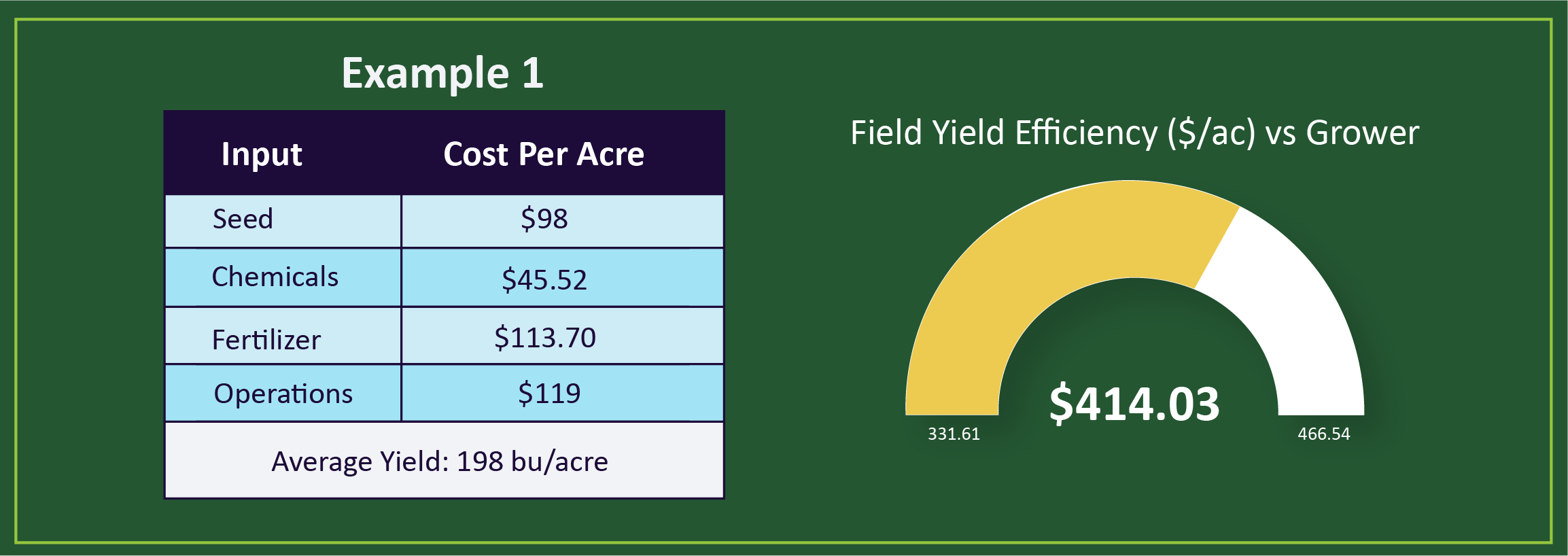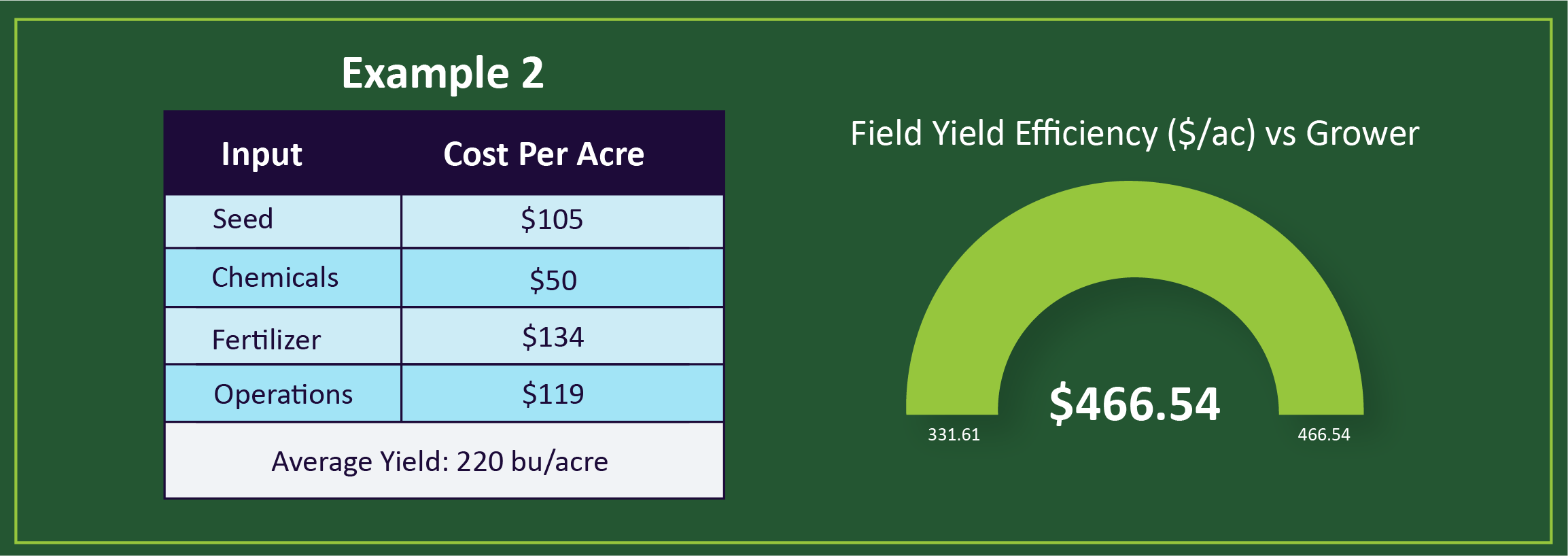As a farmer, you have so many decisions to make. It ranges from what inputs to use, when, at what rates, to what crops are the most profitable on different fields, to the logistics of how you'll plant, spray, harvest, till (or not) your fields. Not to mention the management of grain handling and storage and any employees you utilize. You're looking to build the most profitable business you can that is sustainable year over year.
There are the sayings, "you can't save your way into prosperity" and, "you have to spend money to make money." BUT, you have to know WHERE to save and WHERE to spend. This is where Premier Crop comes in. Economics and agronomics have been divorced from one another in the decision making process for too long. When input prices are high, growers look at what they can cut out. When grain prices soar, it's easier to dump on inputs and seek out that "high yield recipe." What we are finding by using yield efficiency as a metric beyond yield is that we can help growers in both those scenarios to find the right combination of sound agronomics that are still economically viable.
We know that yield is the key measurement growers are focused on. We've worked over the years with our customer base to understand how different parts of their fields are impacted by changes in rates, products, application timing, and application methods. We've focused on building new agronomy knowledge by giving growers easy ways to test and check new ideas they think will increase yield on their own fields, and that's been really popular with growers. They're always trying to find what will move the needle and help them push the limits of what they've achieved in their fields before.
We are also incredibly aware that sometimes high yields can come at a high cost. Growers know there are areas within every field that will never (or at least inconsistently) be the top performing part of the field. No matter how many specialty products you use, or how much fertilizer you apply, you can't overcome the effects of a sand hill or a drainage problem. If those parts of your fields are treated the same, oftentimes you're throwing away input dollars. On the flip side, there are phenomenal parts of fields that can be pushed even harder than you think. We want to really help growers learn and improve their operations with yield efficiency, so we understand that we have to answer the questions, "What's the return? Does it pay?" versus only helping them strive after high yields alone.
Yield efficiency is a metric created to help growers understand if they are profitable at each field level based on their inputs and yield. While you can see a yield efficiency score at a whole farm operation level, you can also see it field by field, to help farmers know which fields are making them the most money and ultimately, whether the management practices they're using are as profitable as they can be. As a company, we have helped growers understand what is driving yield agronomically for decades, but we all know that high yields don't always translate to high profits. By adding yield efficiency as a measuring stick, advisors and growers can see through not just the agronomic lens, but the economic lens as well. It also gives growers an easy way to benchmark against their peers in an anonymous but really powerful way.
We have created a dashboard that has loads of great visuals to show a grower what their yield efficiency score is, what the range of that score is across their operation, and then to dive into both agronomic and economic factors that are at play.
It's really simple. You just add up input costs and subtract them from the yield x sale price per bushel of grain. The only thing we intentionally leave out of that input costs equation are land costs and management costs (that is, what you hold back for cost of living). This leaves room for the grower to have some privacy from their advisor while still supplying enough information for them to gain insight into their own operation.
The field in example 1 didn’t have amazing yields last year--198 bushel average. The yield efficiency for this field was $414 when the grain sale price was $3.98/bushel. Right away we know, they need to subtract their costs on that field. It's an owned field, so we figure they need to still assign some cost to it to cover taxes, a small land payment, etc. We'll allocate $120 for that. This means they made $294/ac on that field.

Next, we’ll compare the example above against a rented field for the same grower. Costs were similar, but the soil tests on this rented field aren't as good, so they spent a little more on fertilizer.
The yield however, was 220. At the same sale price, that made this rented field's yield efficiency $466. Even with a higher overall spend on the field to try to build fertility, they made $52 more per acre. We also saw some amazing correlations to the applied potassium and yield in this field. Now, their rent is $275. That means it only leaves them $191 profit as compared to the $294/ac on the owned field. We learned a few things here:
- Lower yields on the lower land cast still had the biggest return to their investments.
- But, higher yields as they spent more on applied fertility paid off to cover the higher cost land.
- This encouraged us to focus more on building potassium levels EVEN HIGHER in their owned ground. If we could achieve 220 bu on that ground, they could increase their profits by another $87 at the same selling price.

If we draw that out into 2021, that owned field yielded 225+ and the grain prices are, well, pretty great. They spent a fair bit more on potassium this year, but I think we're going to find that it really paid well.
Yield is a critical component when evaluating an operation’s efficiency, but it’s not the only thing growers should be taking into consideration. Yield is really only half of the equation when it comes to measuring efficiency. A grower has much more control over the input dollars spent across their operation compared to relying on the output, or yield. A Yield Efficiency Score is a metric that is easy to comprehend and it is also actionable. Knowing the your Yield Efficiency Score allows growers to have great confidence in their decision making.



